Surf MoviesOver The Edge
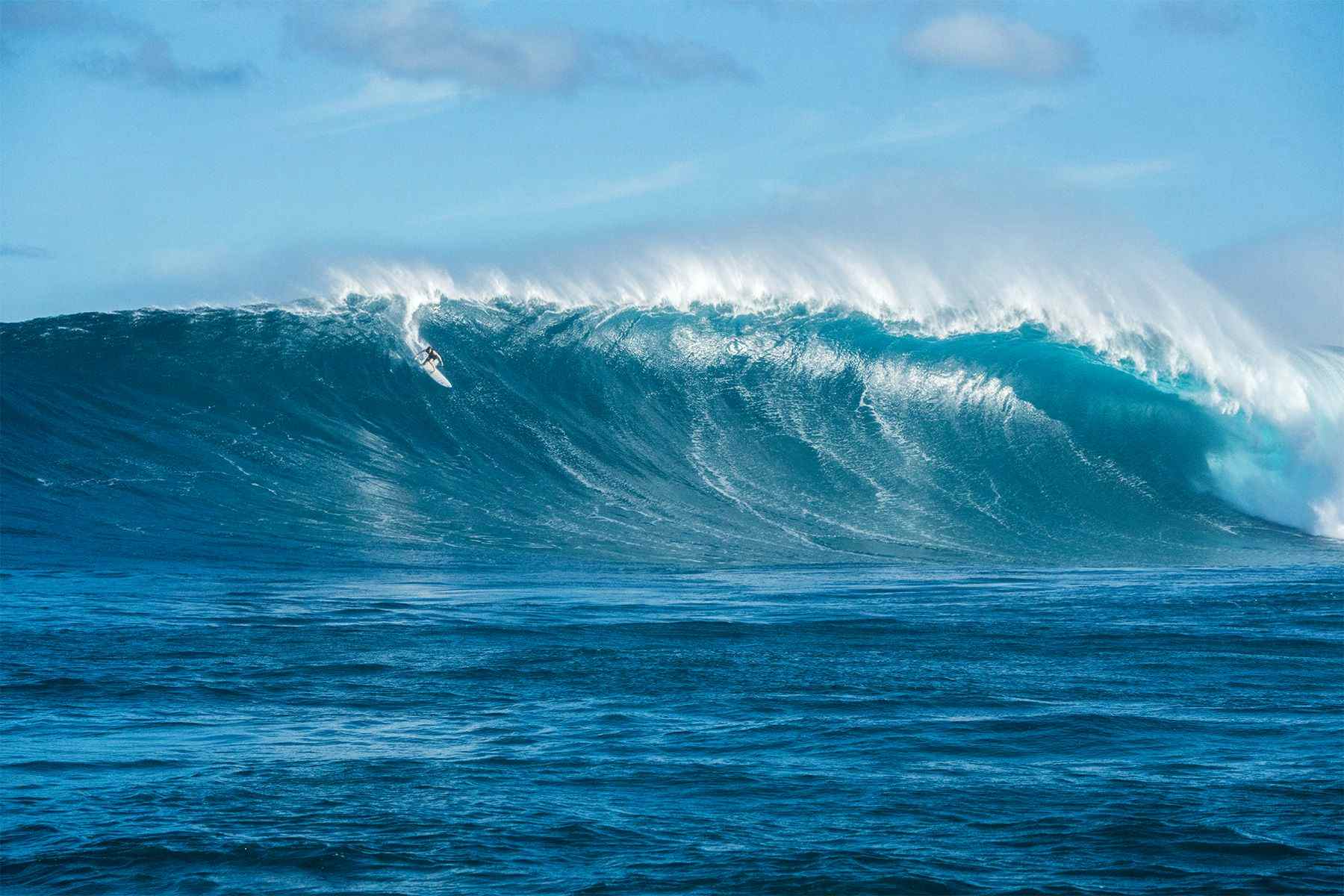
The Matt Bromley Interview
Pulling the nose is common practice among surfers of all levels. Naturally, the bigger, steeper, and hollower the wave the wider our eyes bulge, the more cautious we are of committing, the less likely we are to drop in. For Capetonian surfer, Matt Bromley, however, it is precisely these butterflies-in-the-stomach, threshold moments that motivate him to paddle out – so much so that he has joined forces with Australian filmmaker, Andrew Kaineder, to make a film about it.
Appropriately named Over The Edge, Bromley’s latest documentary traces his big-wave journey through Jaws, Teahupo’o, Mavericks, Nias, Mullaghmore, and Dungeons, to convey what the flapping of the butterfly’s wings feel like. And, the rewards for committing to the drop.

Could you start by telling us how you got into surfing and what the scene was like in Cape Town back then?
I grew up about half an hour away from the ocean. My dad would take me down to Muizenberg beach (the learn-to-surf wave in Cape Town) every second weekend. I enjoyed surfing but it wasn’t a big deal for me. I was more into rugby, swimming, and water polo, and I believe the latter laid an awesome foundation for me to be comfortable in the water. When I was twelve, we moved to Kommetjie [one of Cape Town’s renowned surf regions], and that’s when I dropped everything else and started surfing every single day. I would come home from school and, together with a group of mates (Mikey February, Davey and Benji Brand, Brendon Gibbens, and James Lowe were part of the crew), would paddle out no matter what the conditions were. Around that same time, I got sponsored by Billabong and started competing locally. I joined the national contest scene relatively late; the other guys were already way ahead of me. My division was so competitive, the surfers were at such a high level. Unfortunately, a lot of them didn’t have the opportunity to travel and go big on the international scene. Nevertheless, the fact that the local talent was so incredible pushed South African surfing to global standards.

What sparked your interest in big-wave surfing?
What was special about our house in Kommetjie is that it was right on the beach; people used to film and photograph the sunset from our balcony. To the left was Long Beach, an amazing left-and-right peak, a kind of poor-mans Trestles, the high-performance wave of the area. Right in front of the house was the beach-break called Krans; super fast, nippy rights and lefts, quick take-offs, the spot where I first learned to ride the barrel. Beyond that, about 600 metres out to sea, was the big-wave spot, Sunset. Often I would come home from school and watch the guys towing in with rubber ducks into these massive mountains out there, hoping one day I would be able to surf it, too. And when really big winter storms hit the coast, we could see the back of the waves at Dungeons reeling off, smashing up the big Sentinel mountain peak across the bay. Back then, it didn’t even come into my mind that I would ever surf Dungeons. It all seemed way beyond me.
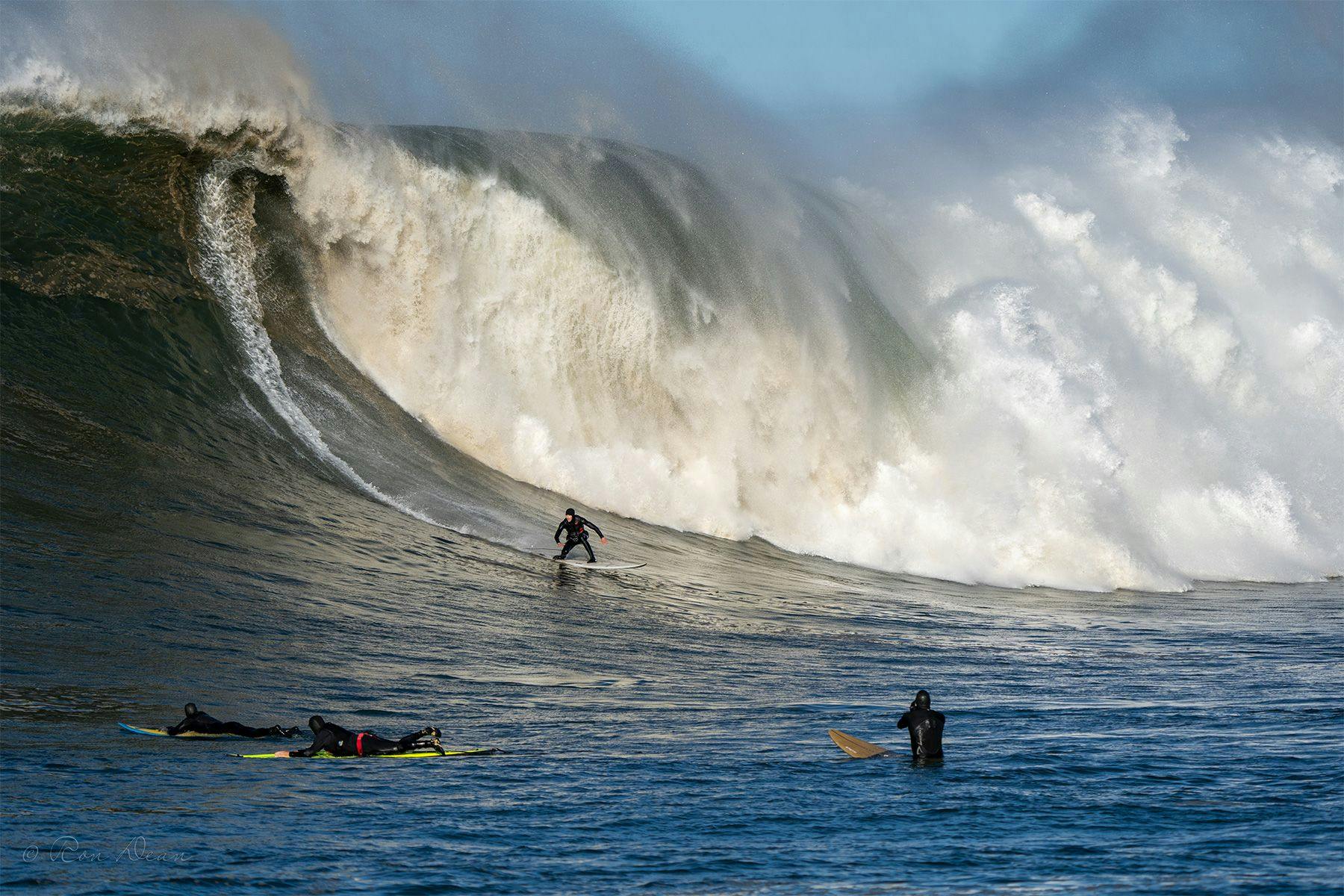
In this context, how do you feel growing up in Cape Town shaped your big-wave experience?
Between Dungeons and Sunset is the most incredible proving ground for big waves. The waves are so raw and unpredictable that if you can learn to read the ocean here then when you go to reefs like Jaws, Mavericks, or Waimea – where the waves will get bigger but are also cleaner and relatively predictable – you feel much more confident. And the reason why Dungeons is so unique and unpredictable is that the area where the wave can break is roughly the size of two rugby fields. You see the horizon starting to cap when a big set rolls over the two outer reefs; the horizon literally breaks, the wave re-forms, and then you have about ninety seconds before the set hits the Dungeons reef. And it can form a huge barrel, it can be flat, it can be a ledge…you never know what you’re going to get – you have to be prepared for anything. So I reckon I have confidence in those big waves because of my upbringing at waves like Dungeons.
What were your first few years as a big wave surfer like?
I had quite a drastic entry into the big wave surfing scene. I’ve always enjoyed pushing my boundaries and surfing bigger waves, but contests were my focus. However, I felt like my passion was being slightly squandered in the contest scene. I loved surfing – but I didn’t love the high-performance surfing in smaller waves. Then, when I was seventeen, I had my first session out at Dungeons. I was totally unprepared. I enjoyed the thought of big-wave surfing but I never trained for it, nor did I have the right equipment. I thought it would be just another day pushing my boundaries.
Out in the line-up, I got caught inside the biggest set I had ever seen in my life – five twenty-five-foot waves. I thought I was going to drown. I had made up my mind to get out of the water and was paddling back towards the channel when something extraordinary happened. Because I had paddled wider, I happened to be in the right place at the right time when the next big set came. The wave broke over the crowd; I spun, paddled for it, and I remember standing at the top of this huge bomb, dropping in, and feeling speed like I had never felt before.
I rode the wave all the way to the channel. When I pulled off, everyone was cheering; it was the most incredible feeling. That was the turning point when I decided I wanted to be a big-wave surfer. I knew I needed to start doing some proper preparation for it; I needed to train, I needed the right equipment, the right mindset. But that’s when it all set off into a big-wave career.

What keeps bringing you back to big waves?
Surfing big waves is my passion – especially steep waves of consequence. When I’m out there and the waves are huge and stormy and wild, I feel this deep sense of peace and fulfilment. I’m aware that I’m living out my purpose, that this is exactly where I’m supposed to be. I get super scared; I always get scared before a swell. But working hard on my preparation and mindset, I try to move through that fear – and that’s when the magic happens.
You’re so far out of your comfort zone when the waves are big; you no longer have any control. The wave comes your way and you feel the nerves, the fear, the anxiety kick in. Then you move through that and paddle into a wave that challenges everything you have ever learned. When you make the ride, it’s the most fulfilling and amazing feeling.
Moving on to Over The Edge. Can you tell us a bit about the film and how the idea came about?
I was fortunate enough to get some budget from Monster, so I linked up with my friend Andrew Kaineder, an amazing filmmaker from Australia, and for the past two years, we have been chasing these wild storms across the world. The film is all about chasing big waves of consequence; steep, vertical, hollow, gnarly waves. It’s about my passion, about what I do. It is about the moment when you’re paddling for a wave and it’s sucking off the reef, so steep and vertical, so scary. It’s about that point where you either say no and let the wave go by or you push yourself over the edge, drop in, and ride the wave of your life. In a way, it also relates to challenging moments in life. So many of us have dreams we’re hoping to achieve but we’re often scared to take that last step and push ourselves over the edge. The film takes us on a kind of metaphorical journey, beginning with moments when I’m pulling back, when I’m not in the right mindset and I miss out on the wave of my life, and building up to going back to Jaws and riding that big wave I’ve been waiting for.
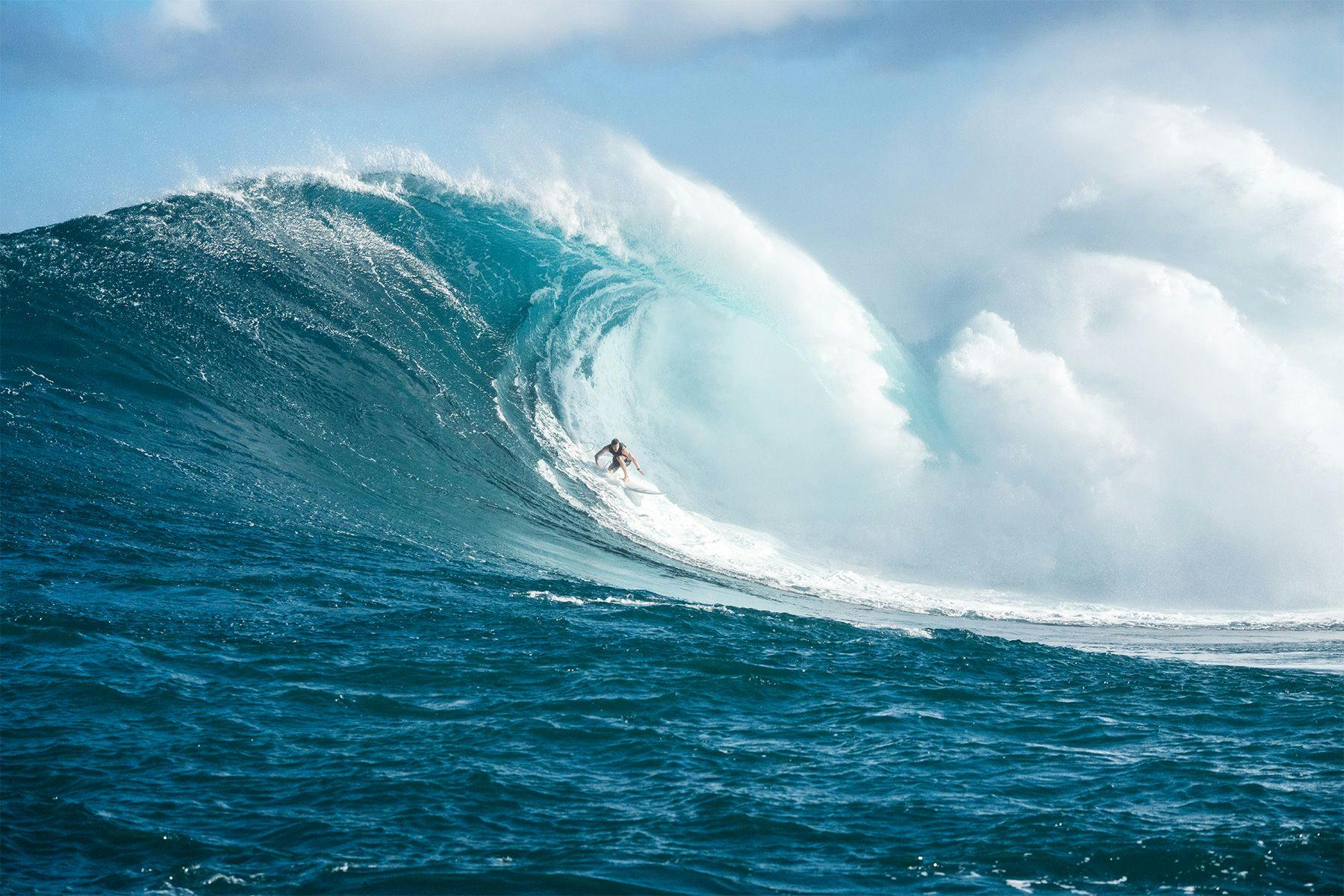
Was there a particular scene that scratched your memory a bit deeper?
One of the worst experiences I’ve ever had was at Jaws. My shaper, Lyle Carlson, had shaped me this fresh board and done a special design on it with South African colours; I was amped to take it out. The swell didn’t seem to arrive, we were all just sitting there talking. Suddenly, this forty-footer reared up. As soon as I saw it I knew I was gonna get caught inside; I was too close in. Looking at the sheer size of the wave, my heart in my throat, I literally thought I was going to die [Laughs]. I paddled to meet the wave. Fortunately, it doubled up and barrelled, and because the lip stretched out, I managed to dive down and get under the falling lip. I got through the wave but my leash snapped and that brand new board got washed up onto the rocks even before I got the chance to ride it. But seeing that wave tower over me was one of the scariest moments I ever encountered.
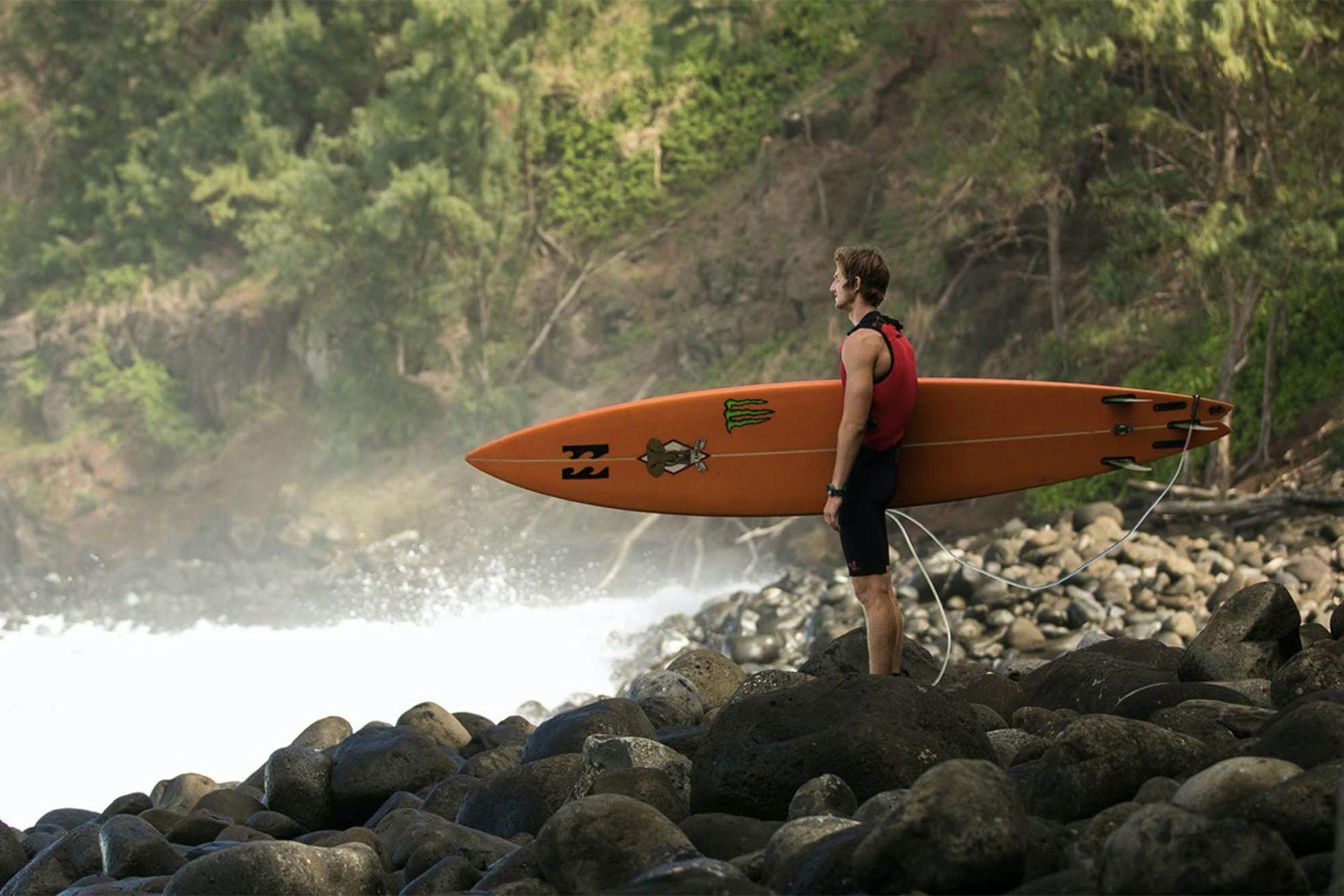
Though it’s not in the film, another gnarly encounter happened at Nazare back in 2016. I had gone over to Portugal to show my previous film, Risky Business. Nic Von Rupp, who was to be my host, warned me we might get a Nazare session during my sojourn, but since I was there for the premiere I didn’t bother to pack any gear. Suddenly, I was on borrowed equipment out the back at Nazare. It wasn’t 100-foot but it was still solid. I got caught inside a massive wave; I pulled my vest, came up, and there was another one behind it. A guy came in to pick me up on a jet-ski. I jumped on the sled but, as he was pulling me, my board kept dragging in the water. I could feel it catching non-stop – then it ripped me off into the foam. I didn’t get a breath. I came up after that second wave with my leash snapped. Another ski came to fetch me but the next foamie smashed us as I jumped on the sled. I got ripped off the back of the ski again, got totally rattled. When I came up, a frothy fifteen-to-twenty-foot double-up landed straight on my head and blew me up the beach. I didn’t have any energy left. I was coughing up blood, couldn’t see straight, the whole horizon was moving. It was the worst beat-down I’ve ever had. The thing with Nazare is that while you’re in the beating under the water, the current’s sucking you back out to sea. So the wave is trying to push you in and the currents are pushing you out, and it’s churning up all the water and the foam. If I wasn’t inflated I feel like I wouldn’t have been able to get to the surface at all.
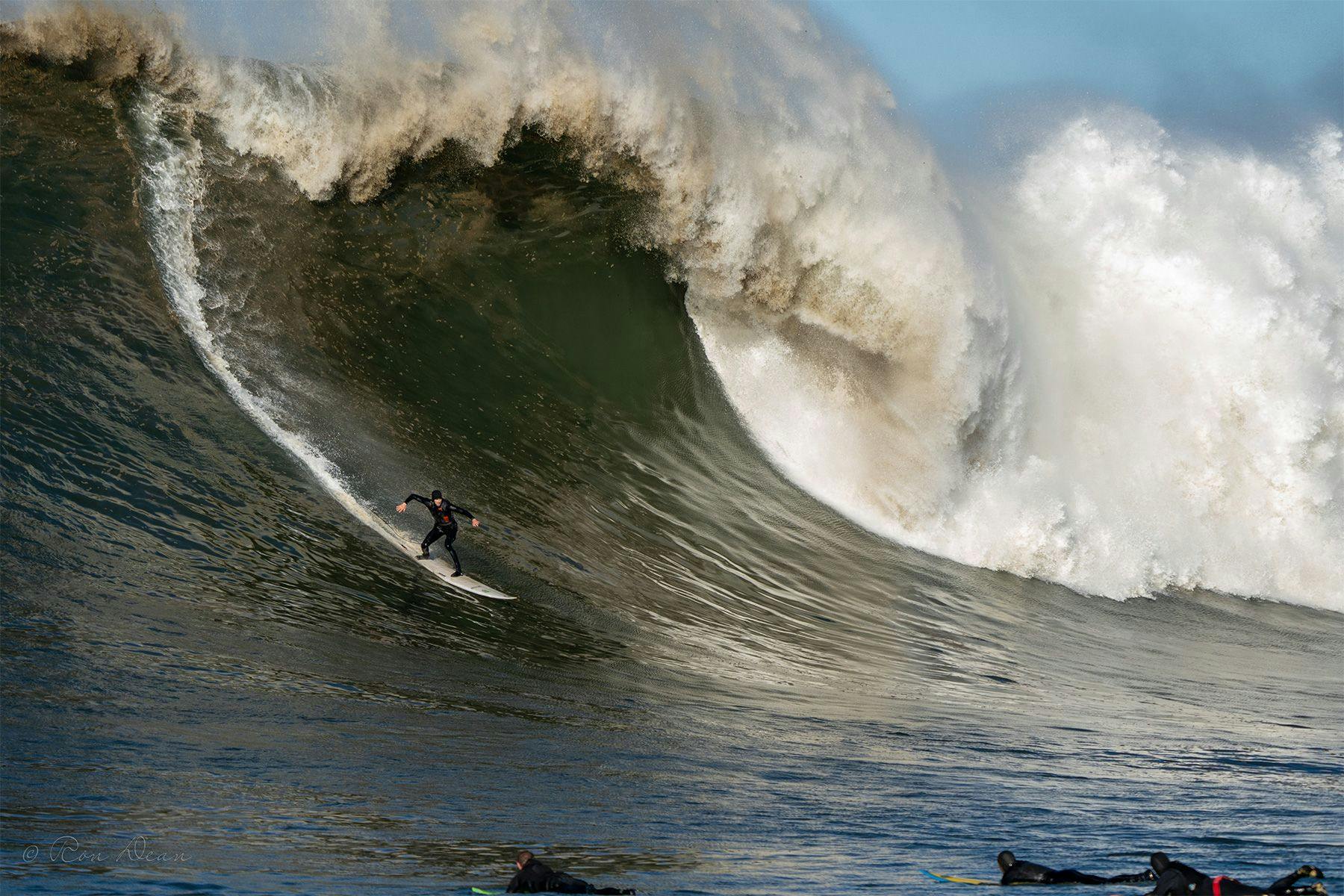
Were there any spots you couldn’t get in the film?
We really wanted to get Dungeons cooking, mainly because it was the start of my big-wave career. We were hoping to open with that and then close with a hero session at Jaws. But over the two years of filming, Dungeons didn’t show herself at all. We had one average session during which I had a pretty bad wipe-out. So unfortunately Dungeons didn’t really come to life. It’s such a fickle beast.
Surfing/chasing big waves is a lot different than surfing/chasing “regular” waves, and going on trips to collect footage adds a lot of other variables to the process. With that in mind, I have three questions. First: Can you tell us a bit about your relationship with the director, Andrew Kaineder?
I have a really good relationship going with Andrew, and as far as the film is concerned, I feel like we have always been on the same page. We’re not in it to do lots of trips and chase every swell; we wanted to chase the special swells that were going to deliver up the wave of a lifetime. That mindset also applied to the sessions: I’m out the back waiting for that one wave that was going to deliver up that special ride. Naturally, this required a lot of patience on his part because I’m not catching lots of waves. But I felt like he really understood what I was looking for. Besides, he’s an incredible filmmaker. He really puts himself in the zone. If he’s swimming, he’s not scared to be in the pit with me. And I believe this helped build that mutual trust in our relationship.
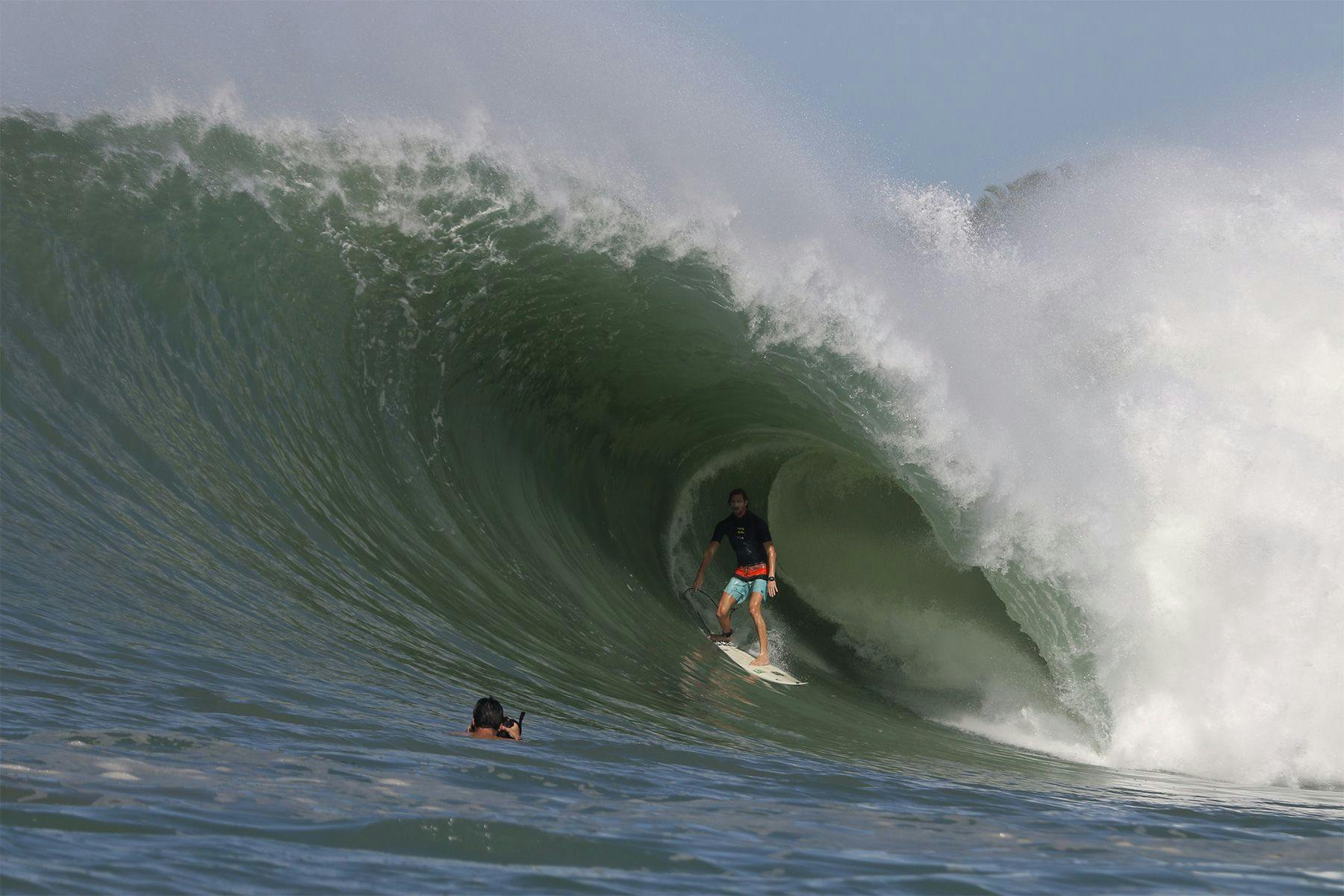
Second: How did you guys deal with the logistics behind the filming and travelling?
From the start, we had a pretty good idea of what we were looking for, so every time there was a big storm we would weigh up all the elements – tides, winds, swell direction, the peak of the swell, what’s coming before it and after it – and then ask ourselves “Does that align with what we’re trying to achieve with the film?” That was the criteria we set for each swell we looked at. Sometimes it got quite tricky – especially since he was in Australia and I in South Africa. So when we made a decision to chase a swell, we would have to make sure we could both get there on time, meeting up either along the journey or at the destination. And the film somehow alludes to this unpredictability of storm-chasing.
For instance, when we went to Tahiti, it was looking like the swell of the century. But then this little low-pressure system popped up and on the peak of the swell, the wind went onshore. We had spent a huge portion of the budget to get there and we didn’t get what we were looking for at all. But I guess that’s also what makes the search so special. Since there are so many elements involved – not only with the ocean and the storms but also my mindset to catch the wave and Andrew’s positioning – when it all comes together, it’s just beautiful.

Third: Given the physical distance (and the travel restrictions of the past year), how did you approach the creative process of translating your story into a film? Were there brainstorming sessions along the way or was it more you doing the surfing and Andrew taking care of filming/editing?
One of the things that I really like about working with Andrew is that he’s very aware and diligent about translating my story. We had lots of brainstorming chats from two-and-a-half years ago; he would ask me what I wanted to do, what I wanted to achieve by making the film, and we would write everything down. Then he was the one to take all that input and give it shape, create something that looks good and hopefully brings my story to life. It certainly makes it more interesting that I’m in South Africa and he’s editing the footage over in Australia, so I have no idea what he’s doing. But I really feel like I can trust him; he knows all of our hopes and dreams for the film. He sends me little sneak peeks now and then, but not enough. So I’ve been on the edge of my seat waiting to see what he’s been up to [Laughs].

I imagine that filming a documentary about your personal journey is quite an intimate process. Or at least very different from appearing on a film with a bunch of other surfers. How did it feel to have the camera always pointed at you?
There is definitely a lot of pressure when the whole story is about me, and each time we chased a storm I felt that pressure. After all, if I didn’t get a wave the trip was pretty much a failure, the movie was not really happening. So I had to step up and perform at each surf break, which was really challenging. Sometimes it was very crowded, sometimes there weren’t many waves, sometimes I was in the wrong mindset. The pressure to perform was heightened because the attention and resources were fully on me. At the same time, I feel very lucky to have had the resources and a guy like Andrew following me around in the first place. I’m stoked that my story is being put together by such a talented person.
What does the film mean to you personally?
I’m hoping that the film can portray a very human part of me, showing that I get scared, I feel fear, I doubt myself all the time. But I also have the determination to face all those things and move through them. I know that this is my purpose. Riding big waves is what I love to do and no matter how scared, vulnerable, or anxious I may feel, I try to push through because I believe those magic moments are on the other side of all the fear and vulnerability. I hope that the story highlights some of that, empowering people to go and ride their big waves in life.
*****
To keep up to date with the forthcoming release of Over The Edge and to find out first where you can see it, follow @mattbromleysurf and @overtheedgefilm on Instagram.